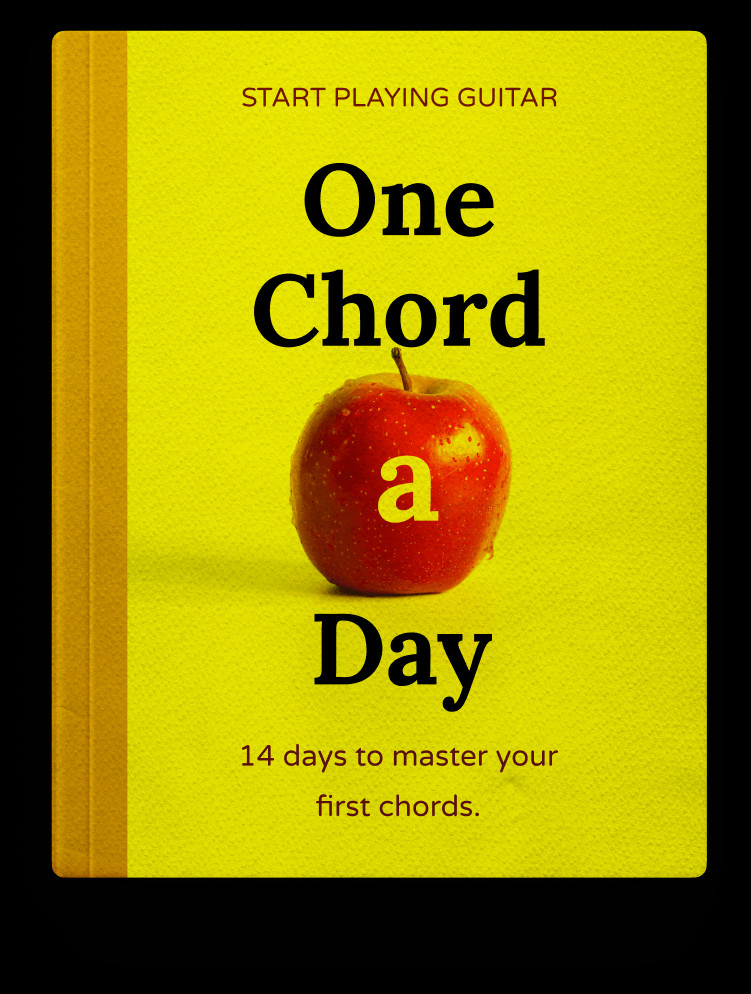The E major chord is a cornerstone for any aspiring guitarist. It’s one of the first chords you’ll likely encounter and for good reason. This chord opens the door to countless songs and musical styles. Let’s dive into how to play the E Major Chord On Guitar and why it’s so crucial to your guitar journey.
Playing the E major chord might seem a little tricky at first glance, but with a bit of practice, you’ll find it’s quite manageable. You only need three fingers to create this rich and full-sounding chord, utilizing all six strings of your guitar.
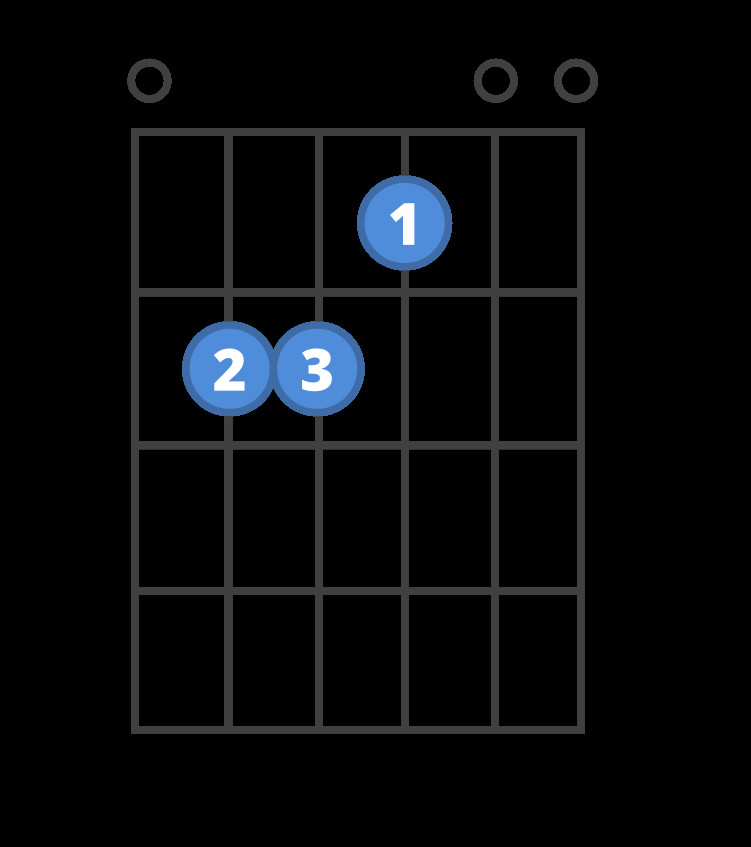 E Major Chord Diagram for Guitar – Standard Open Position
E Major Chord Diagram for Guitar – Standard Open Position
Step-by-Step to Playing the E Major Chord
Let’s break down the finger placement for the E major chord into simple, easy-to-follow steps:
- Index Finger (1st Finger): Place your index finger on the 1st fret of the 3rd string (G string). Press down just behind the fret to get a clear sound.
- Middle Finger (2nd Finger): Position your middle finger on the 2nd fret of the 5th string (A string). Again, ensure you’re pressing firmly just behind the fret.
- Ring Finger (3rd Finger): Place your ring finger on the 2nd fret of the 4th string (D string). Make sure this finger is also pressing down cleanly behind the fret.
- Strum All Six Strings: Once your fingers are in place, strum all six strings from the thickest (6th string, low E) to the thinnest (1st string, high E). You should hear a bright, resonant E major chord.
Take your time to ensure each finger is pressing down correctly and that you are not muting any strings. If you hear buzzing, adjust your finger positions slightly until the chord rings out clearly.
Why is the E Major Chord So Important?
The E major chord is fundamental for several reasons:
- Common Key: E major is a very common key in popular music, especially in genres like rock, pop, country, and blues. Knowing the E major chord allows you to play a vast number of songs.
- Basic Chord Progressions: Many beginner-friendly and popular chord progressions revolve around the E major chord. As mentioned earlier, progressions like E-A-B (I-IV-V in the key of E) are incredibly common and form the basis of countless songs.
- Foundation for Barre Chords: Understanding the E major shape is also helpful when you start learning barre chords. The E shape barre chord is one of the first barre chords many guitarists learn, allowing you to play major chords all over the neck.
- Strong and Versatile Sound: The E major chord has a powerful and uplifting sound. It’s a versatile chord that can be used in various musical contexts, from upbeat and energetic songs to more mellow and emotional pieces.
Easy Songs to Play with the E Major Chord
Let’s explore some simple song examples that utilize the E major chord, often in combination with A and B chords. These are excellent for practicing your E major and getting comfortable with basic chord changes.
As mentioned before, the classic I-IV-V progression in E major is E-A-B. You can find this progression in many songs. Adding the vi chord (minor 6th), C#m, gives you the I-V-vi-IV progression, E-B-C#m-A, which is also widely used.
Let’s revisit the examples from the original article and add a few more:
-
“Beast of Burden” by The Rolling Stones: This classic song beautifully uses the E, B, C#m, A progression.
E I’ll never B be your C#m beast of A burden
-
“Mean” by Taylor Swift: Another song featuring the E, B, C#m, A progression, demonstrating its versatility across genres.
E Someday B I’ll be C#m living in a big old A city And E all you’re B ever gonna be is A mean
-
“Knockin’ on Heaven’s Door” by Bob Dylan/Guns N’ Roses: While often played in G, you can easily transpose it to E. The main chords are G, D, Am (or in E, that would be E, B, C#m – very similar to the examples above!).
-
“Hallelujah” by Leonard Cohen/Jeff Buckley: This song also uses a progression that includes E major, though it’s a bit more complex, learning the E chord will help you tackle it eventually.
Expanding Your Chord Vocabulary: Chords to Learn Next
Once you’re comfortable with the E major chord, expanding your vocabulary is the next logical step. As suggested in the original article, A major and B7 are excellent chords to learn alongside E major.
-
A Major: The A major chord is another fundamental open chord and pairs perfectly with E major. It’s the IV chord in the key of E.
[
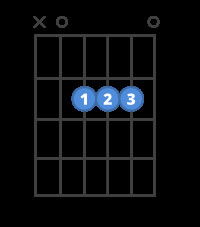 Chord diagram for the A guitar chord.
Chord diagram for the A guitar chord.HOW TO PLAY
A Major](/chords/a-major)
-
B7: The B7 chord is a dominant 7th chord and creates a strong pull back to the E major chord. It’s the V7 chord in the key of E and adds a bluesy or jazzy flavor.
[
 Chord diagram for the B7 guitar chord.
Chord diagram for the B7 guitar chord.HOW TO PLAY
B7](/chords/b-7)
-
C# Minor (C#m): As we saw in the song examples, C# minor is the vi chord in E major and adds a minor, more melancholic touch to progressions.
[
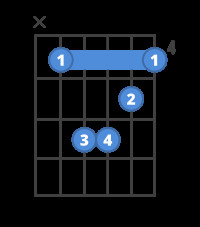 Chord diagram for the C#m guitar chord.
Chord diagram for the C#m guitar chord.HOW TO PLAY
C# Minor](/chords/c-sharp-minor)
Learning these chords in conjunction with E major will significantly expand your ability to play songs and understand basic guitar chord theory.
Take Your Learning Further
Mastering the E major chord is just the beginning! To solidify your understanding and playing, consider these resources:
[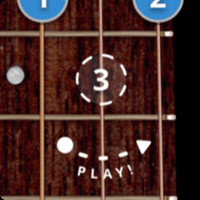
Start playing the E chord »
Chord Coach](https://www.chordbank.com/o/chordtraining?gtx=E)
[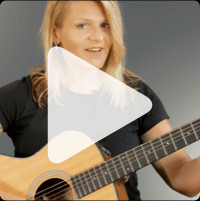
Learn the E chord »
Video – 1:07](https://www.chordbank.com/o/rkvid?vid=E)
Practice the E major chord regularly, experiment with the suggested chord progressions, and explore new songs. With dedication and consistent practice, you’ll soon be confidently playing the E major chord and using it to unlock a world of music on your guitar. Happy playing!
By Anna Freitas
Guitar Instructor & Performer

